Potty training doesn’t have to break the bank. Parents dealing with this milestone know that finding the right potty training seat can make or break the entire experience—and your budget shouldn’t be the deciding factor.
This guide is for parents who want proven results without the premium price tag. We’ve tested and researched seats that actually help kids transition from diapers to the toilet successfully, all while keeping your wallet happy.
We’ll walk you through the must-have features that separate effective seats from cheap knockoffs, plus share our top picks in two price ranges: basic options under $15 and feature-packed seats between $15-$25. You’ll also get practical tips on choosing the right size for your toilet and real feedback from parents who’ve been through the trenches.
Ready to find a potty training seat that works for both your child and your budget? Let’s dive in.
Key Features to Look for in Budget Potty Training Seats
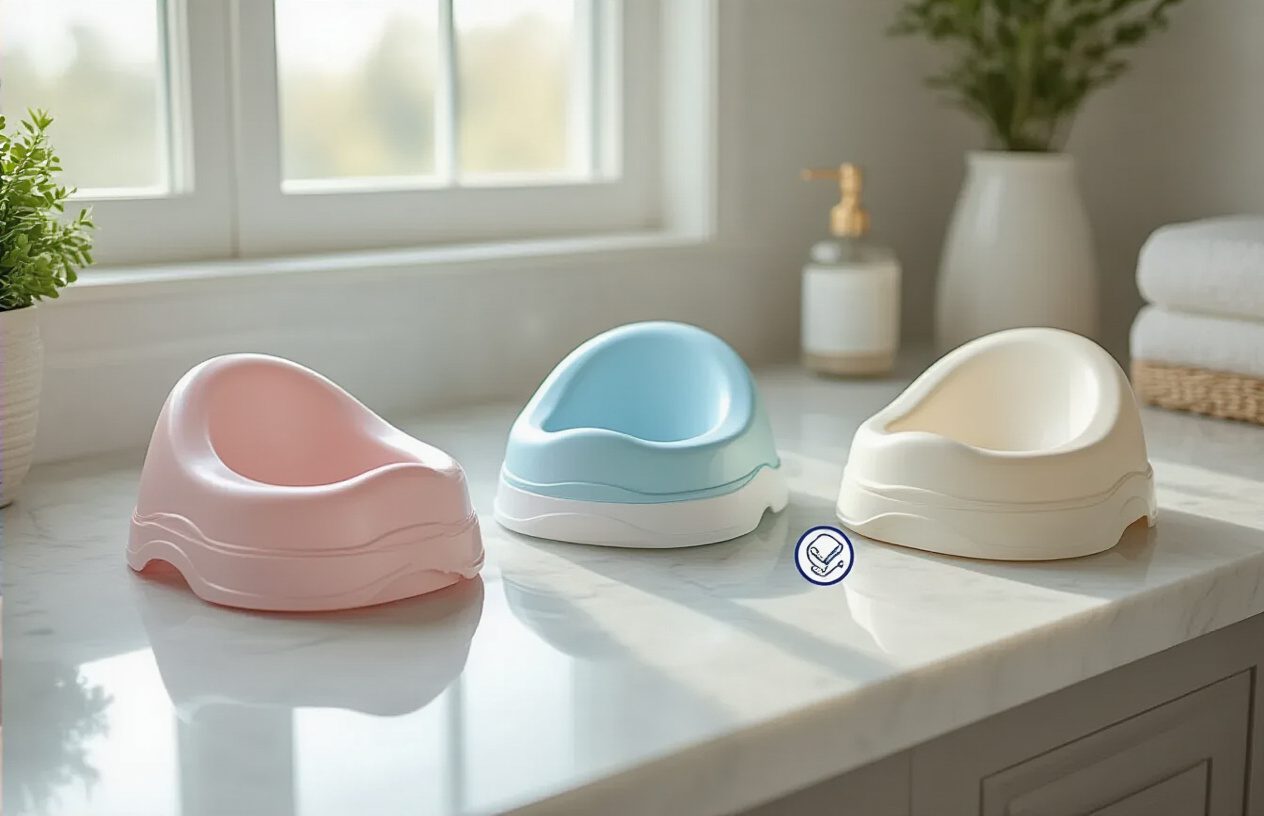
Non-slip grips and secure fit mechanisms
The difference between a successful potty training session and a frustrating cleanup starts with how well your potty training seat stays in place. Quality budget seats feature rubberized grips or silicone pads on the bottom that create friction against your toilet seat. These grips prevent sliding, shifting, or unexpected movement when your child sits down or gets up.
Look for seats with adjustable clamps or brackets that can accommodate different toilet seat shapes and sizes. Some models include twist-lock mechanisms that secure the seat without requiring tools, while others use spring-loaded clips that grip the toilet rim. The best budget options often combine both grip pads and mechanical securing systems for maximum stability.
Avoid seats that rely solely on their weight to stay in place. Even heavier models can shift unexpectedly, creating safety hazards and undermining your child’s confidence during training.
Easy-to-clean surfaces and removable parts
Potty training involves inevitable accidents and messes, making cleanability a top priority for any potty training seat. Smooth, non-porous surfaces resist staining and allow for quick sanitization between uses. Plastic seats with seamless construction eliminate crevices where bacteria and odors can hide.
Removable components make thorough cleaning much easier. Many budget-friendly seats feature detachable splash guards, removable padding, or separable handles that can be washed in the dishwasher or soaked in sanitizing solution. Quick-release mechanisms allow you to remove the entire seat from the toilet for deep cleaning without struggling with complicated attachments.
Textured surfaces might seem appealing for grip, but they often trap dirt and become difficult to sanitize. Stick with smooth finishes that wipe clean with standard disinfectants.
Comfortable padding and ergonomic design
Comfort directly impacts your child’s willingness to use their potty training seat. Well-designed budget seats include soft, cushioned surfaces that make sitting more pleasant while still being easy to clean. Look for padding that’s either built into the seat or easily removable for washing.
The seat’s shape should match your child’s proportions, with appropriate width and depth for their size. Contoured designs provide better support than flat surfaces, helping children feel secure and balanced. Some seats include gentle backrests or side supports that give nervous beginners extra confidence.
Handle placement matters too. Ergonomically positioned grips help children steady themselves while climbing on and off the toilet, reducing the risk of falls and building independence.
Splash guards and safety features
Effective splash guards are essential, especially for boys, but they benefit all children by containing messes and keeping clothes dry. Well-designed guards are high enough to be effective but positioned so they don’t interfere with comfortable sitting or getting on and off the seat.
Safety features on budget seats might include rounded edges to prevent injuries, non-toxic materials that meet safety standards, and weight limits clearly marked by the manufacturer. Some models include built-in steps or foot rests that help children maintain proper posture and feel more secure.
Check that any moving parts operate smoothly without pinch points, and verify that small components can’t be easily removed by curious toddlers.
Top 5 Basic Potty Training Seats Under $15
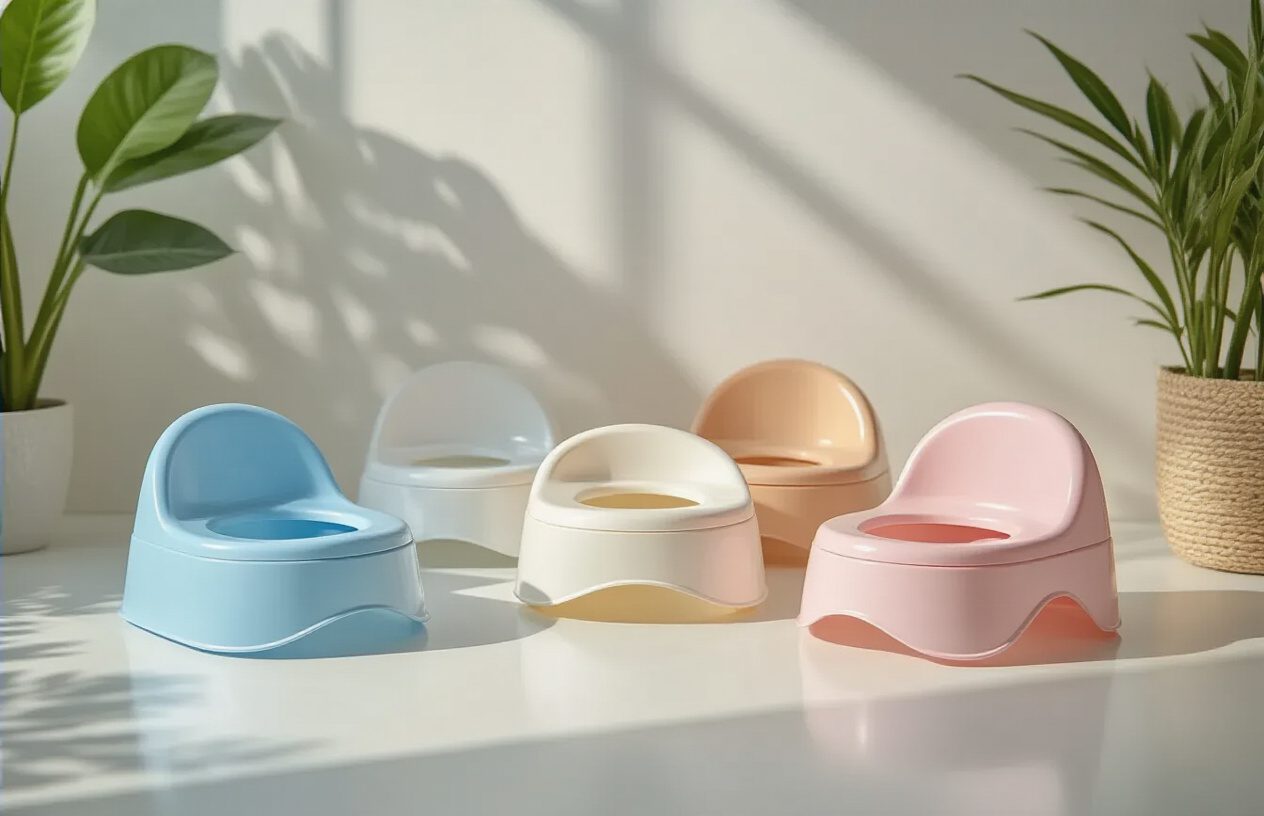
Simple plastic seats with essential features
Finding a reliable potty training seat doesn’t require breaking the bank. Several excellent plastic seats under $15 deliver the core functionality you need without unnecessary bells and whistles. The Baby Bjorn Toilet Trainer stands out as a top performer, featuring a smart splash guard design and non-slip grips that keep little ones secure. Its wide armrests provide stability for nervous beginners, while the built-in deflector prevents messy accidents.
The Mommy’s Helper Contoured Cushie Step-Less offers exceptional comfort with its soft, padded surface that makes longer sitting sessions more bearable for toddlers. This seat includes a practical handle for easy removal and cleaning. The Ginsey Home Solutions Disney-themed seats combine fun character designs with solid construction, making potty time more appealing for reluctant children.
When choosing among basic plastic options, look for seats with:
- Non-slip bottom surface to prevent sliding
- Easy-grip handles for child independence
- Smooth edges to avoid pinching or discomfort
- Simple design for effortless cleaning
- Sturdy construction despite the budget price point
Most basic seats in this price range use durable polypropylene plastic that withstands daily use and frequent washing. The key is finding models that balance cost savings with essential safety features.
Lightweight options for easy portability
Parents who travel frequently or move between different bathrooms need potty training seats that won’t weigh down their already packed bags. Several ultra-lightweight options under $15 make transitions seamless while maintaining effectiveness.
The Kalencom 2-in-1 Potette Plus weighs just 1.2 pounds but converts between a standalone potty and toilet seat reducer. This versatility makes it perfect for families constantly on the go. The collapsible design fits easily into diaper bags or suitcases without taking up precious space.
Munchkin’s White Hot Safety Bath Ducky offers another portable solution at under 2 pounds. Its compact size doesn’t compromise stability, thanks to four suction cups that create a secure grip on various toilet rim sizes. The bright yellow color makes it easy to spot in busy family bathrooms.
For maximum portability, consider these features:
- Foldable or collapsible design for compact storage
- Lightweight materials (under 2 pounds ideal)
- Built-in carrying handle for easy transport
- Quick setup without tools or complicated assembly
- Travel-friendly size that fits standard luggage
The OXO Tot 2-in-1 Go Potty refill rings work with the base unit to create an ultra-portable solution. While the base stays at home, the lightweight rings travel easily and provide the same secure fit anywhere.
Universal fit models for standard toilets
Not all toilets are created equal, but universal fit potty training seats solve compatibility issues without requiring custom measurements. These adaptable designs work across most standard toilet models, saving parents from guesswork and returns.
The First Years Simple & Secure Potty Seat features adjustable front and back positioning to accommodate both round and elongated toilet bowls. Its four-point grip system adapts to different rim thicknesses while maintaining rock-solid stability. This flexibility makes it work in master bathrooms, guest bathrooms, and even public restrooms with standard fixtures.
Jool Baby’s Universal Potty Training Seat takes adaptability further with its innovative adjustment mechanism. The seat expands or contracts to fit toilet rims ranging from 10 to 14 inches, covering virtually every residential toilet type. The cushioned surface remains comfortable regardless of the adjustment setting.
Summer Infant’s My Size Potty Seat offers universal compatibility through its flexible rubber grips that conform to different bowl shapes. The seat automatically centers itself during installation, eliminating the guesswork that often leads to improper fit and safety concerns.
| Feature | Standard Toilets | Elongated Toilets | Round Toilets |
|---|---|---|---|
| Rim compatibility | ✓ | ✓ | ✓ |
| Adjustment range | 10-14 inches | 11-14 inches | 10-12 inches |
| Grip system | Universal | Universal | Universal |
Universal models typically include measurement guides or fitting templates to ensure proper installation before first use. This prevents the frustration of discovering compatibility issues after your child has already started using the seat regularly.
Premium Budget Options: $15-$25 Potty Seats with Extra Features
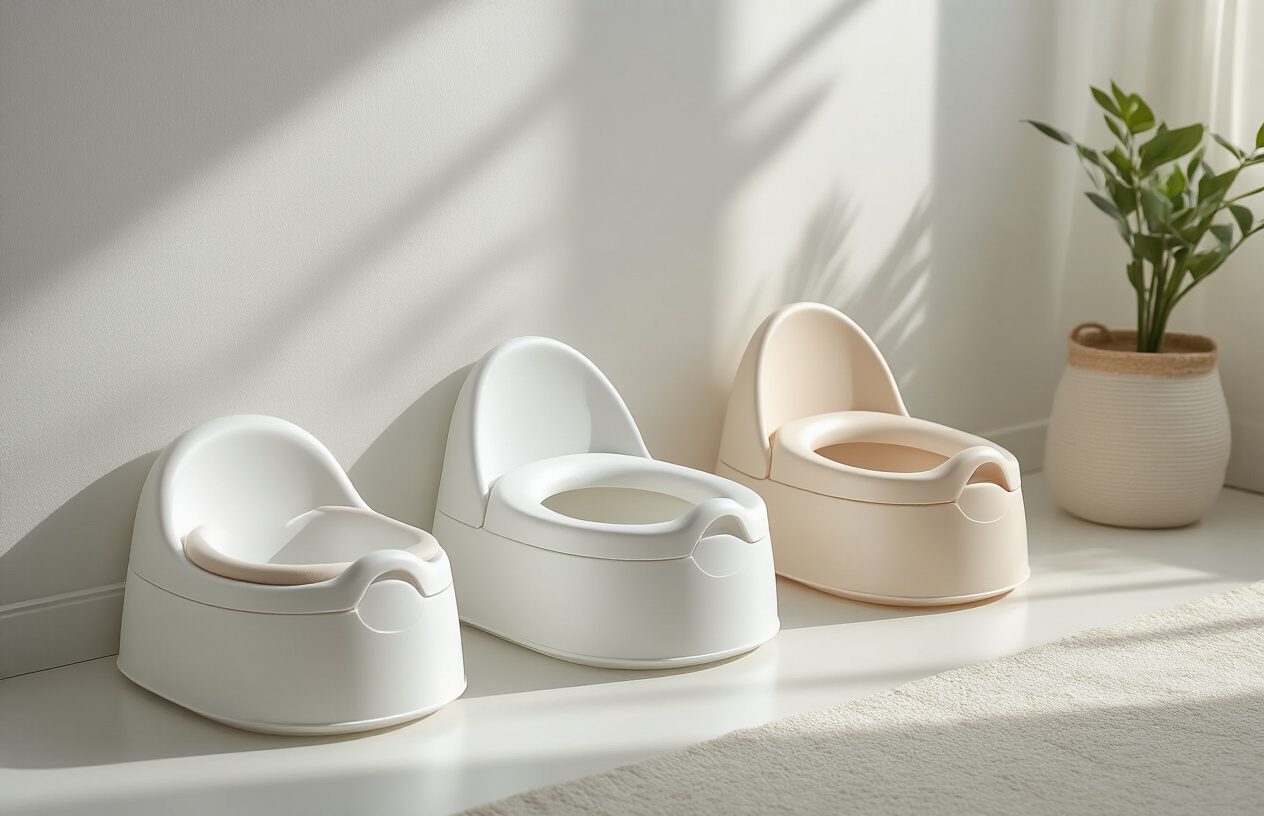
Cushioned Seats with Antimicrobial Properties
Comfort becomes a game-changer when you’re dealing with a toddler who might resist sitting on a hard plastic surface. Cushioned potty training seats in this price range offer soft padding that makes the experience more pleasant for little ones. The Summer Infant My Size Potty features memory foam cushioning that contours to your child’s body while maintaining durability through countless uses.
The antimicrobial properties these seats provide go beyond basic cleanliness. Built-in antimicrobial technology actively fights bacteria and odor-causing germs, keeping your potty training seat fresh between deep cleans. The Munchkin Arm & Hammer Multi-Stage 3-in-1 Potty incorporates baking soda technology that neutralizes odors naturally, making it perfect for busy families who need reliable hygiene protection.
Many parents find these features especially valuable during the learning phase when accidents happen frequently. The combination of comfort and cleanliness helps create positive associations with potty time, encouraging consistent use.
Seats with Built-in Handles and Step Stools
Independence drives successful potty training, and seats with integrated handles and step stools deliver exactly that. The GUGUMII Potty Training Seat with Step Stool Ladder transforms any standard toilet into a child-friendly station. The sturdy handles give toddlers confidence as they climb up and position themselves safely.
Step stool integration eliminates the need for separate purchases and ensures everything stays connected. Your child won’t accidentally kick away a loose step stool or struggle with wobbly separate pieces. The Potty Training Seat with Step Stool by SKYROKU features anti-slip treads on each step and rubber grips that secure firmly to toilet bases.
Handle placement varies between models – some offer side handles for stability while others include a front handle bar. Side handles work better for smaller children who need extra support getting seated, while front handles help with dismounting. The weight capacity typically ranges from 75-150 pounds, accommodating children well beyond the typical potty training age.
Foldable Designs for Travel Convenience
Travel-friendly potty training seats solve the challenge of maintaining consistency away from home. Foldable designs compress into compact packages that fit easily in diaper bags or suitcase corners. The OXO Tot 2-in-1 Go Potty folds completely flat and includes a carrying case that keeps everything sanitary during transport.
Portability doesn’t mean sacrificing stability. Quality foldable seats use reinforced hinges and locking mechanisms that create secure, wobble-free surfaces when deployed. The Jool Baby Products Folding Potty Seat weighs less than two pounds but supports children up to 60 pounds comfortably.
Setup speed matters when dealing with urgent toddler needs in public restrooms. The best foldable models deploy in seconds with intuitive folding mechanisms that parents can operate one-handed. Non-slip grips ensure the seat stays positioned correctly on various toilet shapes and sizes you’ll encounter while traveling.
Musical or Interactive Features for Engagement
Interactive elements transform potty time from a chore into an engaging activity. Musical potty training seats reward successful attempts with cheerful songs or sound effects that celebrate achievements. The Baby Trend Nursery Center features multiple sound options and volume control, letting parents customize the experience.
Some models include educational components like counting songs or alphabet recitations that make sitting time productive. The Fisher-Price Learn-to-Flush Potty plays different sounds for various actions, teaching cause-and-effect relationships while building excitement around the process.
Battery life and volume control become important considerations with musical seats. Look for models with automatic shut-off features that preserve battery power and volume settings that won’t startle sensitive children. Removable sound modules allow for easy cleaning and battery replacement without compromising the entire potty training seat.
How to Choose the Right Size and Fit for Your Toilet
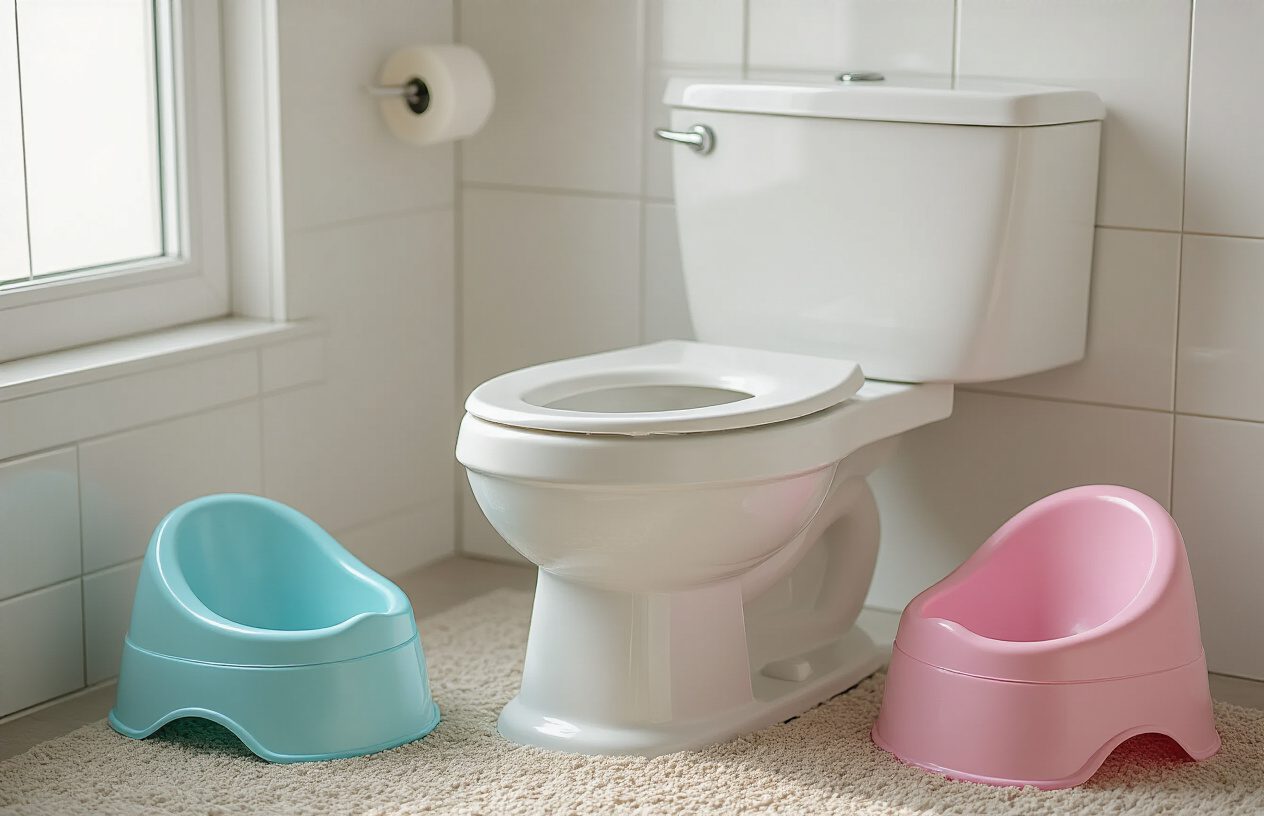
Measuring your toilet seat dimensions
Your toilet’s unique shape and size directly impact how well a potty training seat will fit and function. Standard toilet seats typically measure between 16.5 to 18.5 inches from front to back, with widths ranging from 14 to 15 inches. Round toilets tend to be shorter than elongated models, which can affect how securely your chosen potty training seat sits.
Grab a measuring tape and check these key dimensions:
- Length: Measure from the front edge to the back of the toilet bowl
- Width: Measure the widest part of the toilet seat opening
- Seat thickness: Check how thick your existing toilet seat is, as some potty training seats have specific requirements
Don’t forget to measure the distance between the toilet seat hinges if you’re considering a potty training seat that attaches directly to your existing seat. Many budget-friendly options work with standard hinge spacing, but double-checking saves you from returns and frustrated toddlers.
Understanding universal vs. specific fit options
Universal potty training seats promise to fit most toilets, but “most” doesn’t always include yours. These seats typically feature adjustable components or flexible materials that adapt to different toilet shapes. They’re great for families with multiple bathrooms or those planning to move soon.
Specific fit options target particular toilet brands or shapes. While they cost about the same as universal models, they often provide a more secure, stable fit. Here’s what each option offers:
| Universal Seats | Specific Fit Seats |
|---|---|
| Adjustable sizing mechanisms | Precise measurements for exact models |
| Flexible rubber grips | Custom molding for specific shapes |
| Works with 85-90% of toilets | Perfect fit for designated models |
| Easy to transfer between bathrooms | Less versatile but more stable |
Testing stability and safety before use
A wobbly potty training seat creates anxiety for both you and your child. Before your toddler’s first attempt, conduct a thorough stability test. Press down on different areas of the seat, simulating how a child might shift their weight. The seat shouldn’t slide, tip, or feel loose.
Check these safety points during your test:
- No gaps: The seat should sit flush against your toilet without large spaces where little fingers or body parts could get caught
- Secure grip: All attachment points should hold firmly when you apply gentle pressure
- Smooth edges: Run your hands along all surfaces to ensure there are no sharp or rough spots
- Weight capacity: Verify the seat can handle your child’s current weight plus some wiggle room
If the seat moves more than a quarter-inch in any direction during normal use, try adjusting the attachment mechanism or consider returning it for a better-fitting model. Your child’s confidence depends on feeling secure, and a stable potty training seat makes the whole process smoother for everyone involved.
Installation Tips for Maximum Safety and Effectiveness
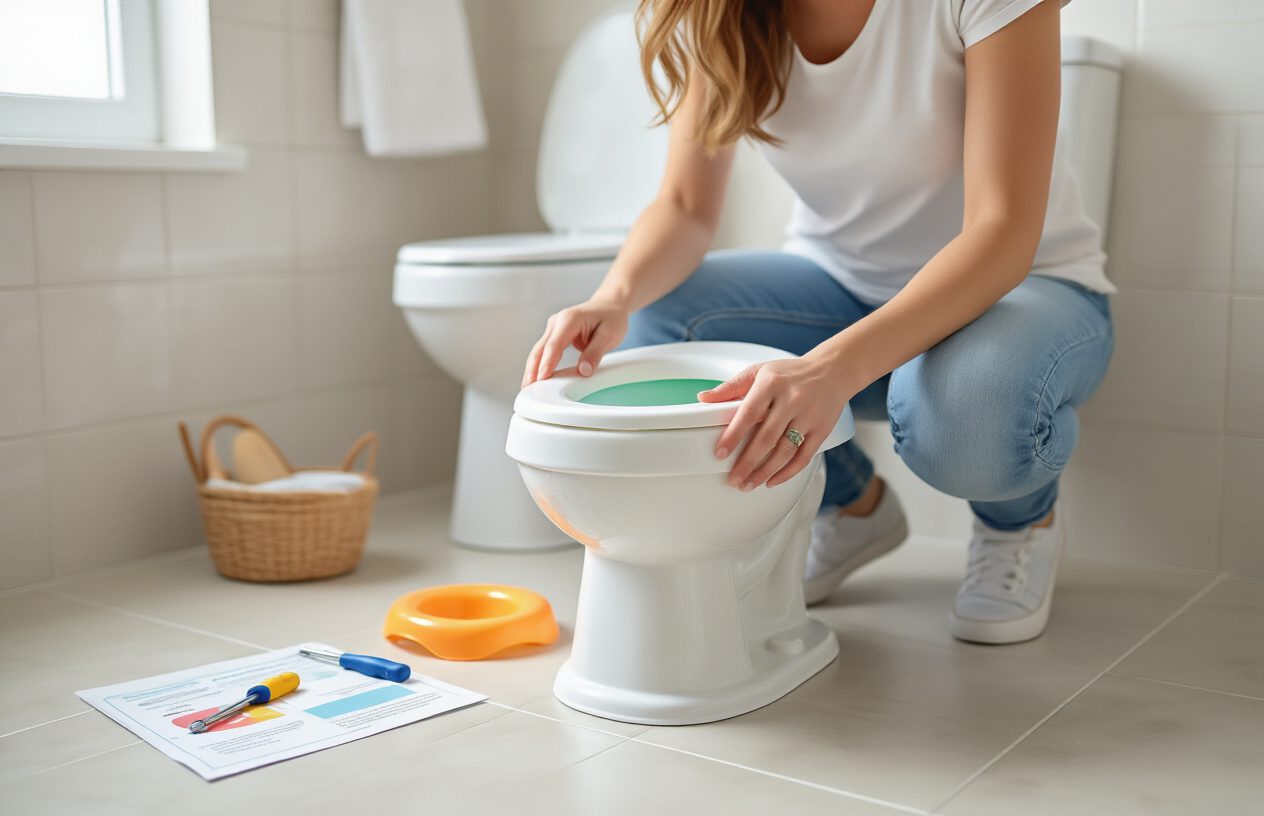
Proper Positioning Techniques for Secure Attachment
Getting your potty training seat positioned correctly makes all the difference between a wobbly, unsafe experience and a rock-solid setup that gives your child confidence. Start by lifting both toilet seat lids and placing the potty training seat directly onto the toilet bowl rim. The key here is alignment – make sure the front edge of the potty training seat lines up perfectly with the front of your toilet bowl.
Check that the seat sits completely flat against the toilet rim without any gaps or raised areas. If you notice wobbling, adjust the positioning until the seat feels stable. Many parents skip this step and wonder why their potty training seat keeps sliding around during use.
For seats with adjustable arms or clamps, tighten them gradually while testing the fit. Don’t overtighten immediately, as this can crack the toilet bowl or damage the seat. The sweet spot is firm enough to prevent movement but gentle enough to avoid damage.
Regular Maintenance and Cleaning Schedules
Daily cleaning keeps your potty training seat hygienic and extends its lifespan significantly. After each use, wipe down the seat with antibacterial wipes or a mild cleaning solution. Pay special attention to crevices where bacteria can hide.
Weekly deep cleaning involves removing the entire seat for thorough washing. Most budget potty training seats can be cleaned with warm soapy water and a soft brush. Avoid harsh chemicals that might damage plastic components or create unsafe residues.
Monthly maintenance checks help catch wear and tear early. Inspect rubber grips, hinges, and attachment points for signs of deterioration. Replace worn components immediately to maintain safety standards.
Safety Checks and Adjustment Guidelines
Before each use, perform a quick stability test by gently pressing down on different areas of the potty training seat. Any movement or flexing indicates the need for repositioning or tightening.
Check weight limits regularly, especially as your child grows. Most budget seats support 30-50 pounds, but always verify the manufacturer’s specifications. Exceeding weight limits compromises safety and can lead to sudden failures.
Monitor your child’s posture while using the seat. Their feet should rest comfortably on a stool, and they shouldn’t need to grip the sides for balance. Adjust positioning if you notice straining or discomfort.
Troubleshooting Common Installation Problems
Slipping seats usually result from incorrect sizing or inadequate cleaning before installation. Remove the seat, clean both the toilet rim and seat contact points thoroughly, then reinstall with proper alignment.
Cracking sounds during use often indicate overtightening of adjustment mechanisms. Loosen slightly and test again. If cracking persists, the seat may be incompatible with your toilet model.
Uneven sitting typically happens with oval toilet bowls when using round-designed seats. Double-check compatibility before installation, and consider returning incompatible models rather than forcing a poor fit.
For seats that won’t stay centered, try adjusting the back positioning first, then the sides. Some toilet designs require specific placement techniques that aren’t immediately obvious from standard installation instructions.
Real Parent Reviews and Success Stories

Honest feedback from families who tested these seats
Sarah from Portland tried three different potty training seats before finding the right one. “The first two were disasters – one was too slippery, and the other pinched my daughter’s legs. When I switched to the Summer Infant My Size Potty, everything changed. She actually wanted to sit on it because it felt secure and comfortable.”
Many parents report that the simple ring-style potty training seats work best for children who are easily overwhelmed. Jessica from Denver explains, “My son has sensory issues, and fancy seats with sounds and colors were too much stimulation. The basic Mommy’s Helper cushioned seat was perfect – just soft enough to be comfortable without any distractions.”
Budget-friendly doesn’t mean cheap quality, according to multiple parent testimonials. Mike from Chicago shares, “We bought a $12 potty training seat thinking we’d need to upgrade later, but it lasted through both our kids and is still going strong with our nephew.”
Parents consistently mention that comfort makes the biggest difference. “The padding on our budget seat meant my daughter could sit longer without complaining about discomfort, which was crucial during those early training days,” notes Amanda from Tampa.
Before and after potty training timelines
Real families shared their potty training journeys, showing how the right seat can dramatically speed up the process. The Martinez family documented their experience: before using a proper potty training seat, their 2.5-year-old son showed interest but had multiple accidents daily over six weeks. After switching to a stable, well-fitting seat, they achieved daytime training in just two weeks.
Lisa from Austin tracked her daughter’s progress meticulously. “Week 1 with our old makeshift setup: 15 accidents, lots of tears. Week 1 with the new potty training seat: 3 accidents, and she was asking to use the potty. By week 4, we were completely accident-free during the day.”
The Thompson family tried training their twins simultaneously with different seats. Twin A used a basic $10 ring seat, while Twin B got a more expensive $30 model. Both children were fully trained within the same timeframe – three weeks – proving that expensive doesn’t always mean more effective.
Multiple families report that having a secure, comfortable potty training seat reduced their overall training time by 30-50%. The key factor wasn’t the price point but rather finding a seat that fit their child’s size and their toilet properly.
Common challenges and how these seats helped overcome them
Fear of falling ranks as the number one potty training obstacle that good seats solve. Jennifer from Phoenix explains, “My daughter was terrified of the big toilet until we got a seat with handles. Those little grips gave her the confidence she needed to climb up and feel secure.”
Slipping and sliding caused major setbacks for the Rodriguez family until they invested in a seat with non-slip grips. “Our toilet seat is smooth, and regular potty training seats would shift around. Once we found one with rubber grips underneath, training became so much smoother – literally and figuratively.”
Many parents struggle with children who refuse to use the potty because it’s uncomfortable. The cushioned seats consistently solve this problem. “My son would hop right off because the hard plastic hurt his legs,” shares Katie from Nashville. “A padded seat meant he could sit long enough to actually go.”
Size mismatches create frustration for both parents and children. Several families mentioned buying seats that were either too large or too small for their toddler. “The adjustable seat we found was a game-changer. We could customize the fit as our daughter grew, and she felt confident using it,” reports David from Seattle.
Cleaning difficulties often discourage consistent potty training seat use. Parents praise seats with smooth surfaces and removable parts. “Being able to pop the seat in the dishwasher meant I didn’t dread cleanup time, so I was more willing to let her practice frequently,” notes Rebecca from Miami.
Cost-Effective Maintenance and Longevity Tips
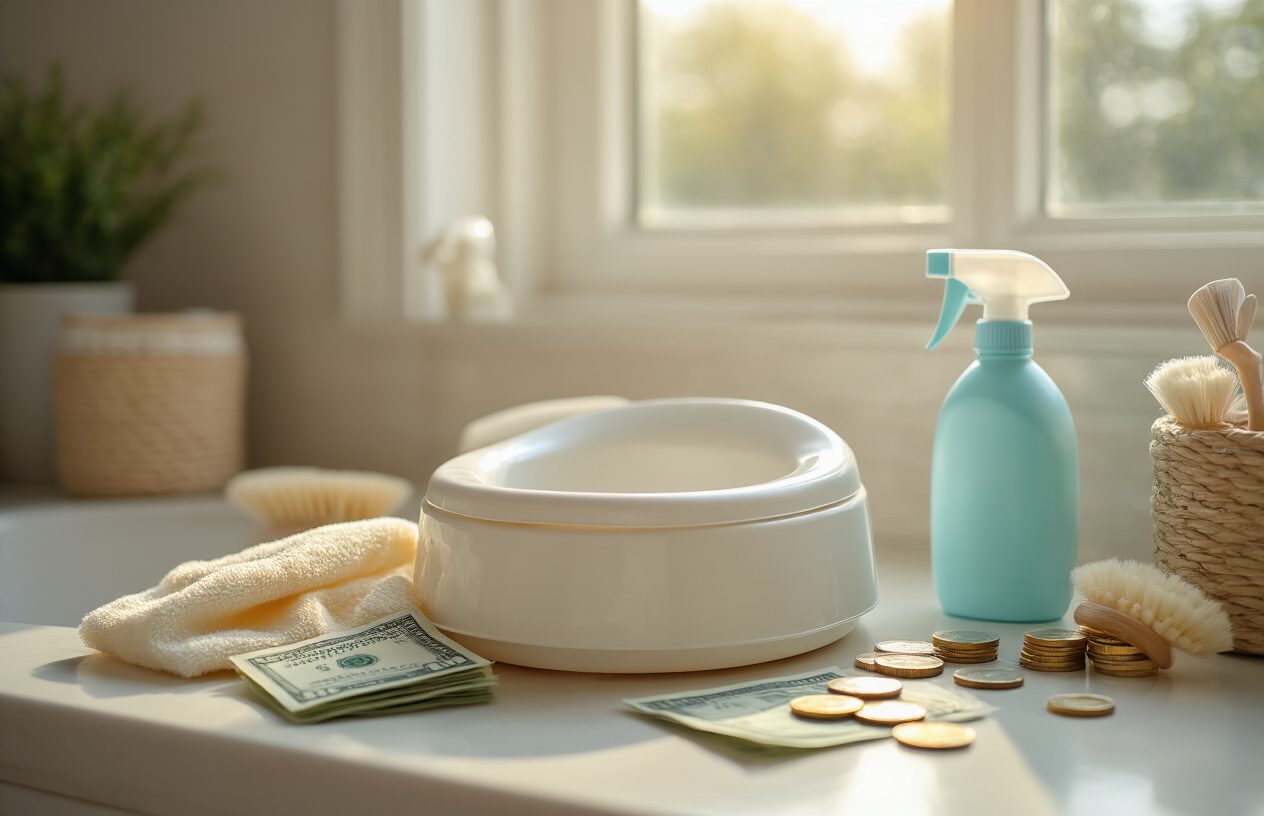
Extending the life of your potty training seat
Regular cleaning is your best friend when it comes to making your potty training seat last longer. Wipe down the seat after each use with gentle, baby-safe cleaners or simple soap and water. Avoid harsh chemicals that can crack plastic or fade colors over time.
Check the hinges and adjustment mechanisms monthly for loose screws or wear. A quick tightening can prevent bigger problems down the road. Many parents miss this step, but it’s what separates seats that last one child from those that survive multiple kids.
Store your potty training seat in a dry area when not in use. Bathroom humidity can warp plastic components and encourage mold growth in hard-to-reach crevices. A closet shelf or storage basket works perfectly.
Pay attention to how your child uses the seat. Teaching proper sitting technique prevents unnecessary stress on handles and support features. Kids who rock back and forth or use the handles as leverage points can damage even the sturdiest seats.
When to replace vs. repair damaged parts
Cracks in the main seat area mean immediate replacement – there’s no safe way to repair structural damage that affects hygiene or stability. Small scratches on handles or decorative elements are purely cosmetic and don’t require action.
Loose hinges often just need new screws or washers, which cost pennies compared to buying a new seat. Most hardware stores carry compatible replacement parts for standard toilet seat mechanisms.
If the non-slip grips start peeling away from the bottom, you can replace them with new adhesive pads rather than buying an entire new potty training seat. These pads are available at most baby stores for under five dollars.
Broken splash guards on boy-specific models usually can’t be repaired effectively. The plastic welding required isn’t worth the effort when replacement seats cost so little.
Storing and preserving seats between children
Clean thoroughly with disinfectant before storage, paying special attention to crevices where bacteria might hide. Let everything air dry completely to prevent mold growth during storage.
Wrap the seat in a cloth bag or old pillowcase rather than plastic. Plastic bags can trap moisture and cause material degradation over months or years of storage.
Store flat or hanging rather than stacked under heavy items. Pressure can warp the seat shape, making it fit poorly when you need it again.
Take photos of any adjustment settings before storage. When your next child is ready, you’ll know exactly how the previous setup worked without starting from scratch.
Check stored seats every six months for any signs of pest damage or deterioration. A quick inspection saves you from discovering problems when you’re ready to potty train again.
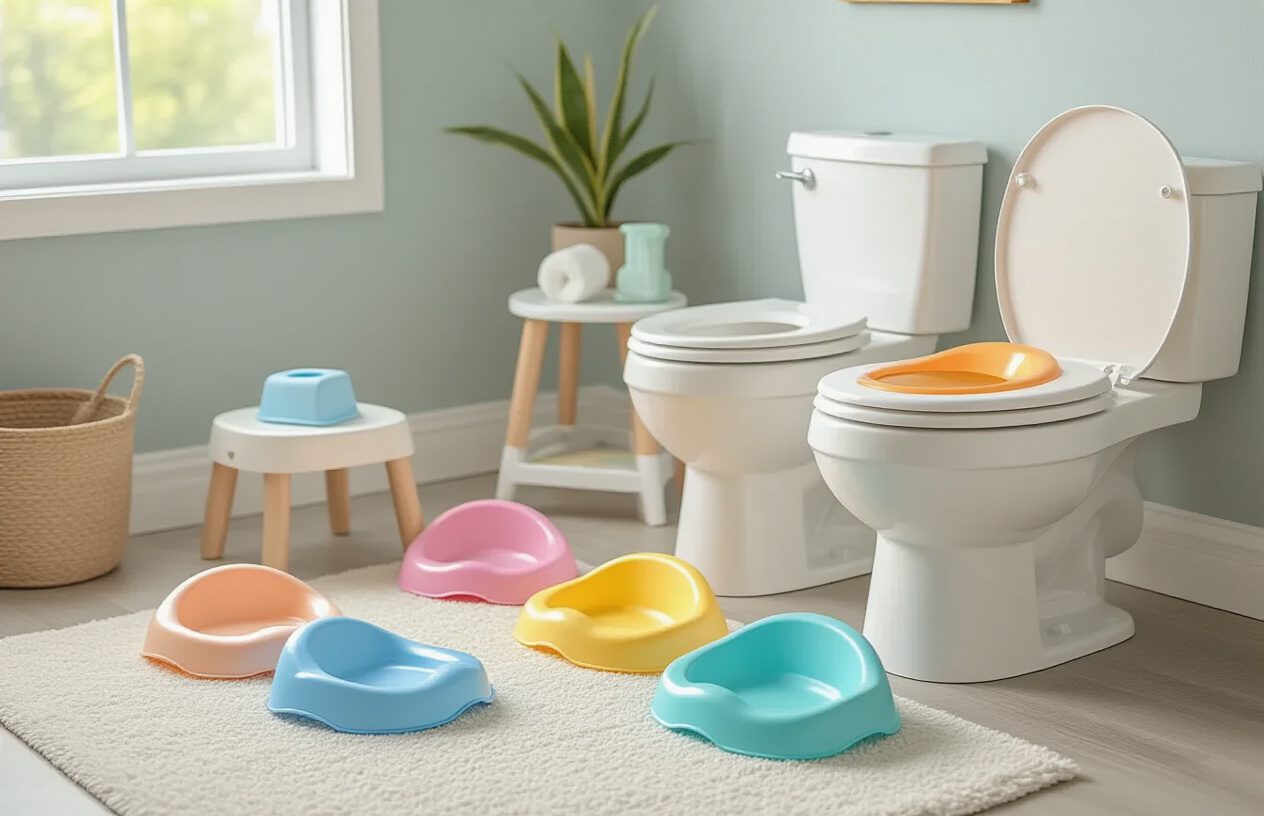
Finding the perfect potty training seat doesn’t have to drain your wallet. The seats we’ve covered prove that you can get reliable, safe, and effective training tools without spending a fortune. From basic models under $15 that get the job done to feature-rich options in the $15-$25 range, there’s something for every family’s budget and needs. The key is focusing on essential features like safety grips, comfortable sizing, and easy cleaning rather than flashy extras that bump up the price.
Remember to measure your toilet before buying, and don’t skip the installation basics – proper setup makes all the difference in your child’s comfort and safety. The real parent reviews show that success often comes from consistency and patience rather than the most expensive gear. With proper care and maintenance, even the most budget-friendly seats can last through multiple children, making them an even smarter investment for your family’s potty training journey.





